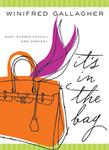Material Culture and Records (Or, Having Some Fun)

There has been sporadic attention paid to the material culture dimensions about how records are created, carried, and stored. Years ago, Thomas Schlereth, a pioneering material culture specialist, wrote a number of essays looking at office furniture. The engineering scholar Henry Petroski has written effectively about devices like pencils, paper clips, and post-it notes. The National Building Museum in Washington, D.C. some years ago staged a wonderful exhibition on the evolution of the modern office that was replete with insights about how file cabinets, new office technologies, and other similar features transformed the nature of how records were utilized in these offices. We need a lot more work on the artifacts reflecting modern recordkeeping systems, from the Wooten desk to the ubiquitous portable data device now dangling from the ears of many office workers.
I believe that the desks, cabinets, shelves, wallets, purses, and other such devices can tell us a lot about the evolving nature of records and recordkeeping systems. As a result, I am always on the hunt for new reading material about this topic. Sometimes, anything remotely related to it will offer enough insights to make the reading worthwhile.
Winifred Gallagher’s amusing and chatty little book on purses – It’s in the Bag: What Purses Reveal – and Conceal (New York: HarperCollins Publishers, 2006), ISBN-10: 0-06-113748-0, caught my eye in a stroll through a neighborhood, independent bookstore. I have read a number of other books by freelance writer Gallagher, including her books on the “power of place” and “house thinking,” and I have always enjoyed her insights, writing style, and subject matter. However, if it weren’t for my instance in the potential for carrying documents possessed by purses, I must admit I might have found it difficult to get through her most recent book (since I don’t carry a purse, hang out in stores selling them, or fully understand why my wife needs as many as she owns).
Gallagher provides a brief, popular history of the evolution of the handbag, focusing on the development of interest in high-end designer bags and why women seek them out, what I guess is popularly referred to as “It bags” (a new term for me). Gallagher describes this high fashion handbag as being to “fashion what the iPod is to music. Each object is a beautiful container that marries form and function, a kind of generic art object that its owner personalizes and regards almost as a body part. Like the iPod, the It bag is a small package that delivers a lot of information about its owner and the twenty-first-century metropolitan way of life” (p. xi). The information associated with the handbag is both what it conveys as an object and what it can hold. The latter is what interests me most.
The author provides a breezy informal analysis of the purse. For example, Gallagher remarks that “from a historical perspective, the luxury bag’s high profile reflects the profound change in women’s status and income” (p. 11). I wonder if there is any relationship between the same social status and the contents of the handbags?
It’s in the Bag includes a lot of information about the fashion industry and the making and marketing of these bags (and the celebrities and designers who carry what), more information than I was interested in (although I love the retro-60’s illustrations depicting the purses). Gallagher also provides commentary on those who collect these bags, and the second-hand trade flourishing in New York and other places in order to keep those who want such items amply supplied. Fakes and reproductions are also part of this as well.
What I am most interested in is what Gallagher refers to as the most prevalent reason we like certain handbags: “The most obvious reason why we bond with a certain everyday thing, such as a handbag, is that it fulfills a necessary function, such as carrying our stuff” (p.65). Gallagher ascribes our attraction to such objects as everything from being like a child’s security blanket to a reflection of “our increasingly materialistic, highly mobile, socially disconnected society” (p. 67). Of course, I want to know more about whether a handbag is targeted for its ability to carry various PDAs, cell phones, and laptops, but I didn’t learn much about this. Gallagher says she learned a lot about how a “simple possession – one of life’s little things – can become a partner in a silent but rewarding relationship. Whether it’s transporting my stuff, expressing my taste, preserving a memory, or cheering up a bad day, my bag now seems . . . not just a thing, but also a small part of who I am” (p. 100). I wanted to know more about the implications of these little things for records and recordkeeping matters, but this book only whetted my appetite for better understanding this – but, hey, this was a fun read and a good start for thinking about one aspect of the material culture affecting archives.

